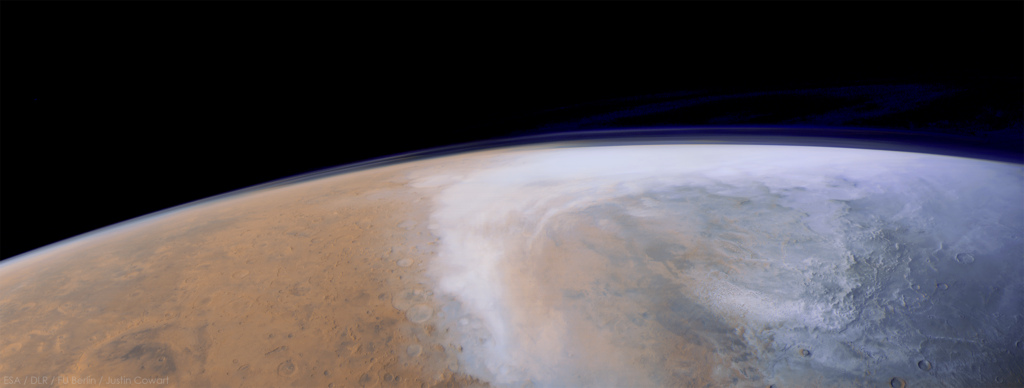Martian Snow
flurries in the polar night
Snowfall in the polar winter of Mars is unlike anything on Earth: temperatures plummet and the martian air (made mostly of CO) begins to freeze. In the darkness of polar night, flurries and snow storms quietly blanket the surface with “dry ice”, drawing fresh air into the polar atmosphere to fill the void. This CO cycle strongly influences Mars’ global climate and energy balance.

We used data from the Mars Climate Sounder (MCS) to investigate polar snowfall and its effect on the present-day climate. MCS is an infrared sounder onboard the Mars Reconnaissance Orbiter spacecraft, which seeks to reveal the history of water and its role in shaping potentially habitable environments on Mars. Our ongoing research is revealing new insights into the exchange of water and carbon dioxide between the polar caps and atmosphere.
Further information:
- Hayne, P. O., Paige, D. A., & Heavens, N. G. (2014). The role of snowfall in forming the seasonal ice caps of Mars: Models and constraints from the Mars Climate Sounder. Icarus, 231, 122-130. Link
- Hayne, P. O., Paige, D. A., Schofield, J. T., Kass, D. M., Kleinböhl, A., Heavens, N. G., & McCleese, D. J. (2012). Carbon dioxide snow clouds on Mars: South polar winter observations by the Mars Climate Sounder. Journal of Geophysical Research: Planets, 117(E8). Link